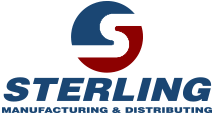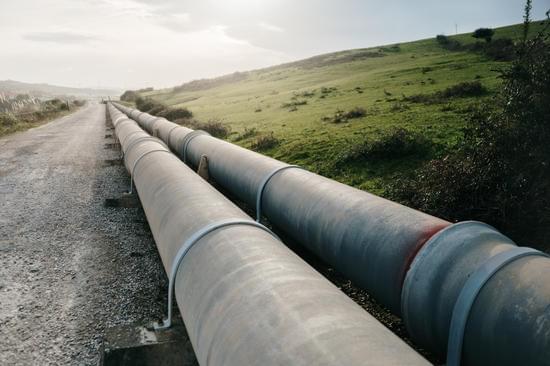In the world of pipeline maintenance, one of the most effective and innovative cleaning tools is the foam pig.
Despite its quirky name, this device plays a crucial role in maintaining the efficiency and longevity of pipelines across various industries.
Sterling Manufacturing, a long-time provider of high-quality foam pigs, understands their importance to oil and gas and other companies that rely on pipelines to move their product.
“Regular pigging is fundamental for maintaining pipeline integrity and efficiency. Studies have shown that consistent use of pigs can significantly reduce the risk of pipeline failure,” explains USA Wire.
Let’s explore how these foam marvels work their magic in keeping pipelines clean and operational.
What are Foam Pigs?
Foam pigs are cylindrical devices made from highly durable, flexible polyurethane foam. They’re designed to fit snugly inside pipelines and travel through them, pushed by the flow of the pipeline’s contents.
The term “pig” is believed to come from the squealing noise early metal versions made as they moved through pipes.
These versatile tools come in various densities and sizes to accommodate different pipeline diameters and cleaning requirements.
Some foam pigs are even equipped with abrasive coatings or embedded wire brushes for more aggressive cleaning tasks.
The flexibility of foam allows these pigs to compress and expand as needed, making them ideal for pipelines with varying diameters or those with tight bends and valves.
How Do Foam Pigs Clean Pipelines?
Here is how foam pigs clean pipelines:
- Scraping Action: As the foam pig moves through the pipeline, its slightly abrasive exterior scrubs the inner walls, dislodging built-up debris, scale, and other contaminants. This scraping action is gentle enough not to damage the pipe’s interior but effective in removing stubborn deposits that can accumulate over time.
- Absorption: The porous nature of the foam allows it to absorb liquids and small particles as it travels, effectively removing them from the pipeline. This absorption capacity is particularly useful for removing residual liquids or capturing fine particulates that might otherwise be left behind by other cleaning methods.
- Sealing: The pig’s snug fit creates a seal within the pipe, pushing debris and liquids ahead of it as it moves. This sealing action ensures that the entire circumference of the pipe is cleaned and that contaminants are efficiently moved towards the exit point of the pipeline.
- Flexibility: Foam pigs can navigate bends and irregular pipe shapes, ensuring thorough cleaning throughout the system. Their ability to compress and expand allows them to pass through reducers, tees, and other pipeline components that might stop more rigid cleaning devices.
- Customizable Cleaning: Foam pigs can be used in conjunction with cleaning solutions or solvents. By saturating the pig with appropriate chemicals, operators can enhance its cleaning capabilities, tackling specific types of buildup or contamination more effectively.
Benefits of Using Foam Pigs
There are many benefits to using foam pigs in pipeline maintenance and inspections:
- Efficiency: Foam pigs can clean pipelines quickly and effectively, reducing downtime. A single pig run can often clean several miles of pipeline in one go, making it a time-efficient solution for large-scale operations.
- Cost-effective: They’re relatively inexpensive compared to other cleaning methods and can be used multiple times. The reusability of foam pigs contributes to their cost-effectiveness, especially when compared to one-time-use cleaning solutions.
- Versatility: Suitable for various pipeline diameters and configurations. From small-diameter pipes in food processing plants to large oil and gas pipelines, foam pigs can be tailored to fit almost any application.
- Separation and Batch Changeover: Pipelines often need different types of products through the same pipeline and foam pigs can be used to provide product separation to avoid contamination and product purity.
- Gentle on Pipes: Unlike metal pigs, foam pigs are less likely to damage the interior of pipes. This is particularly important for older pipelines or those made from softer materials that might be susceptible to scratching or gouging.
- Chemical Resistance: Can be used with various cleaning chemicals for enhanced cleaning power. High-quality foam pigs can withstand exposure to a wide range of solvents and cleaning agents without degrading.
- Corrosion and Erosion Be Gone: Pipelines are constantly fighting against the ravishes of corrosion and erosion. Foam pigs can help remove corrosive agents and abrasive particles before they can do damage.
- Environmentally Friendly: Foam pigs can reduce the need for large volumes of cleaning chemicals, making them a more environmentally conscious choice for pipeline maintenance.
- Inspection and Maintenance: Foam pigs can be used for cleaning and inspections. Foam pigs can be used on test runs to see if more complex pigs can pass, and they can be used to locate obstructions in the pipeline.
- Improved Flow Efficiency: Regular use of foam pigs can help maintain the internal diameter of pipelines by preventing buildup, thus ensuring optimal flow rates and reducing pumping costs.
Industries That Benefit from Foam Pig Cleaning
Oil and Gas in the primary user of foam pigs, but far from the only sector to take advantage of these versatile devices:
- Oil and Gas: In this industry, foam pigs are used to clean crude oil and natural gas pipelines, removing paraffin wax buildup and other contaminants that can reduce flow efficiency.
- Water Treatment: Municipal water systems use foam pigs to maintain the cleanliness of distribution pipelines, ensuring the delivery of safe, clean water to consumers.
- Food and Beverage Processing: Foam pigs help maintain strict hygiene standards in pipelines used for transporting liquid foods, dairy products, and beverages.
- Chemical Manufacturing: In chemical plants, foam pigs are employed to clean product lines between batches, preventing cross-contamination and ensuring product purity.
- Pharmaceutical Production: The pharmaceutical industry uses foam pigs to maintain the sterility of pipelines used in drug manufacturing processes.
- Paint and Coatings: Manufacturers use foam pigs to clean lines between color changes, reducing waste and ensuring product quality.
- Pulp and Paper: In paper mills, foam pigs help clean the pipelines that transport pulp slurry, improving efficiency and product consistency.
The Sterling Manufacturing Advantage
At Sterling Manufacturing, we’ve been at the forefront of custom foam solutions for over 50 years. Our expertise in designing and manufacturing high-quality foam products extends to the creation of efficient, durable foam pigs for pipeline cleaning.
Our team of experienced engineers and foam specialists work closely with clients to develop foam pigs that address their pipeline cleaning needs. Whether it’s creating pigs with specific densities, sizes, or abrasive properties, we have the knowledge and capabilities to deliver products that exceed expectations.
Whether you need foam pigs for routine maintenance or challenging cleaning tasks, reach out to Sterling Manufacturing today.


